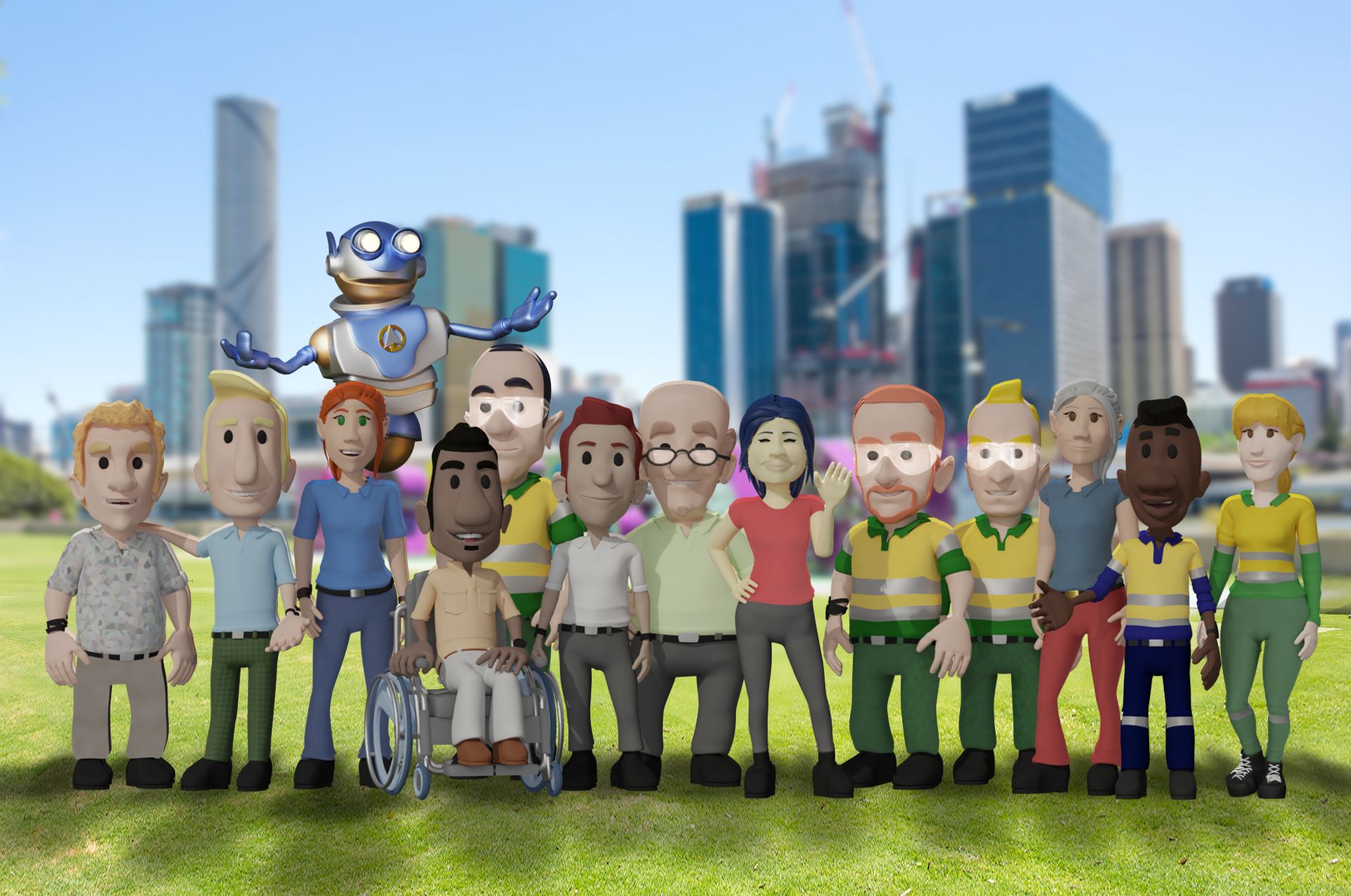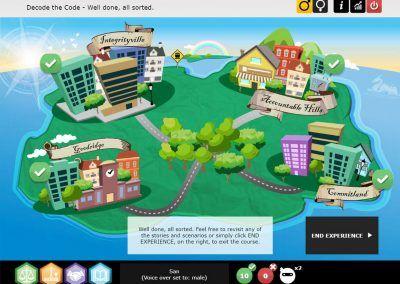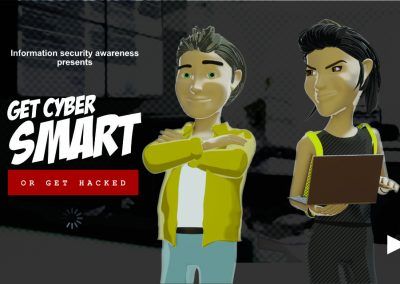We’re all in this together.
This would be the third official iteration for the Code of Conduct (“the Code”) e-learning program. Unlike the previous version where you read a story (eg. scenario) and make a choice, a cartoon character will tell you their story and ask you for advice. If you give them good advice, we move on. Give them a less-than-ideal advice and we’ll visit the content of the Code, to remind us of the organisation’s expectations and preferred behaviours. In a way, similar to the classic “choose your own adventure” stories.
There aren’t winners or losers in this training package, yet for every choice you make, the game logic will still grant you points for both good and not so good decisions. The big reward would be the time you will save when collecting more good points. The ‘Code Ninja’ mode, added in the current version, is still present. The program lets you choose whether you want to see the entire content, or just face the scenario-based quiz. This option, in particular, triggered many positive feedbacks. There are thousands of employees that have been working in the organisation for many years and will know the Code by heart. I find it is only fair to respect their existing knowledge and build from there.

The team members you encounter along the course. Each one plays a role in a story they will tell you. You then decide what to make of it, whether the event was “okay” or not, as well as if further action could or should be taken.
Issues that are seldom black and white.
With the characters telling you their story, you don’t have to go through large chunks of text to understand the scenario before making a decision. Plenty of research out there will indicate video can increase engagement and characters can increase relatability. The scenarios deal mostly with grey areas, where there isn’t a 100% right or wrong answer. In this gamified experience, we go for better choices rather than absolutely correct ones.
The rationale behind it? I like to think that workplaces are complex. It is made of people, and people are complex (Cynefin, anyone?). I understand it is more than just that, with governance and its policies, organisation culture and perhaps a management strategy that will not always match the environment needs. However, that is beyond both my reach and the scope for this project. So, what then? After some reasoning, I managed to persuade the subject matter experts (SMEs) to let me “blur the line” between right and wrong answers in some of the scenarios, and score them accordingly. Each time you choose an option that is not the organisation’s preferred one, and yet it is not wrong either, an extra screen will say that, while we respect your choice, there are other ways to handle the issue. You are invited to consider alternatives, yet if you don’t want to, we’ll respect your choice. You still get to proceed and finish the training without any penalty.
The end of a saga
In the past few years, I’ve been lucky to be involved with some important learning programs, such as Connection and Take-Off, both part of Council’s Leadership Academy, as well as the Code of Conduct. That’s house rules, it’s what we accept and what we don’t. It sets the expected behaviours for every single employee, internal, permanent, part-time and what have you. This version with the character animation would be my third and latest iteration.
For a solid two-ish years, there were many conversations over the content, what and how it should be presented, adjustments, updates, fine-tuning etc. From concept to completion, every stakeholder involved was consulted, most got to play-test the gamified work in progress during production. Every single one of them, including the sponsor, provided a very positive view of the program, in a constant feedback loop we had. All milestones approved with flying colours – except the last, the final sign-off.
This one got stuck for months, before the bomb landed on my desk; the project was canceled, without any explanation. After some digging I learned that the sponsor decided the project wasn’t “serious enough”. Which made us all wonder, what changed? Two years in a loving relationship and then, boom! It’s over… but hey, “it’s not you”.
Classic rational system with complicated strategies, I told myself. Once an executive decision is made, a descriptive process follows and the adoption is enforced top-down, with little to no latitude for interpretation. Efforts are appreciated, support is offered at team level; we vent a little, shake it off and move on. Next?
I just completed the game and loved it! So nice to see something different. some comments from my perspective: I think the goal is clear as there are hidden messages throughout which links back to the Leadership Blueprint behaviours. It’s very easy to navigate (…), and the dashboard is a great idea, as it’s a constant reminder of where you’re at. So clever, well done you.


















